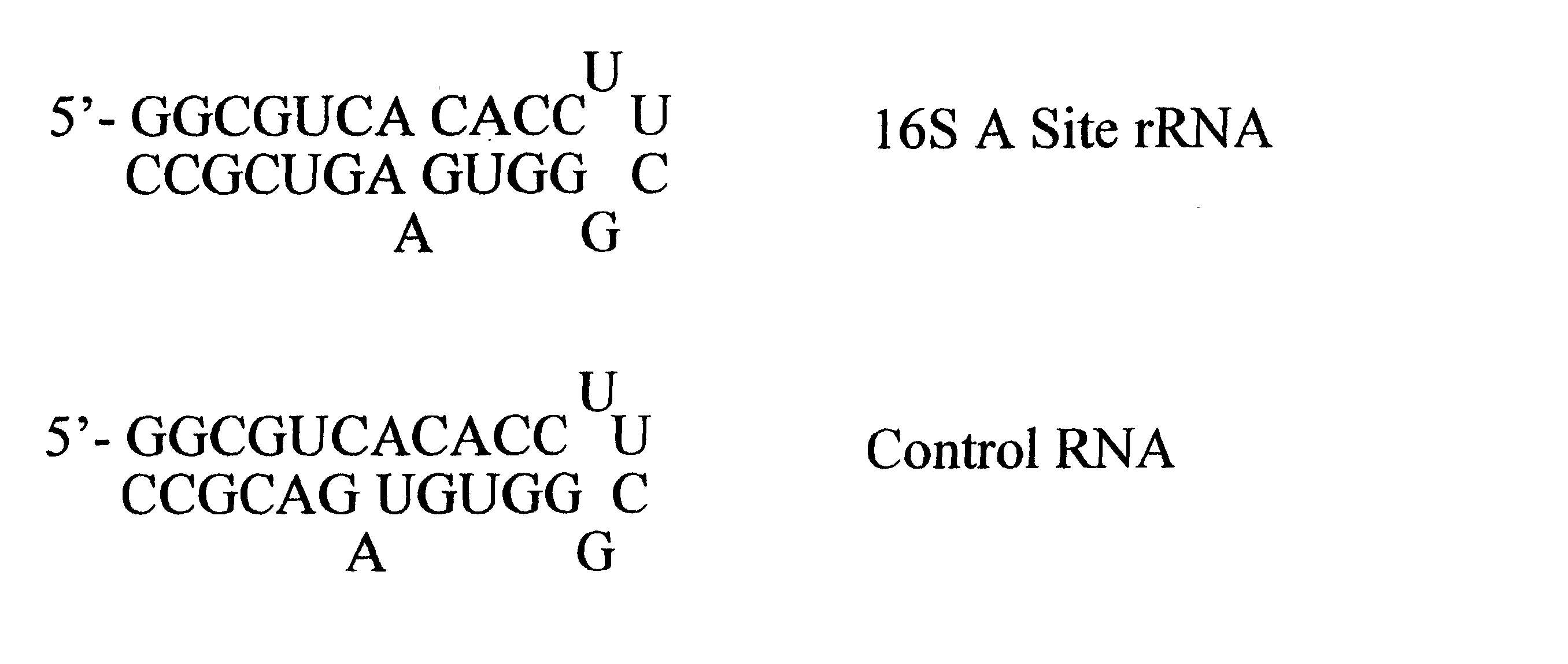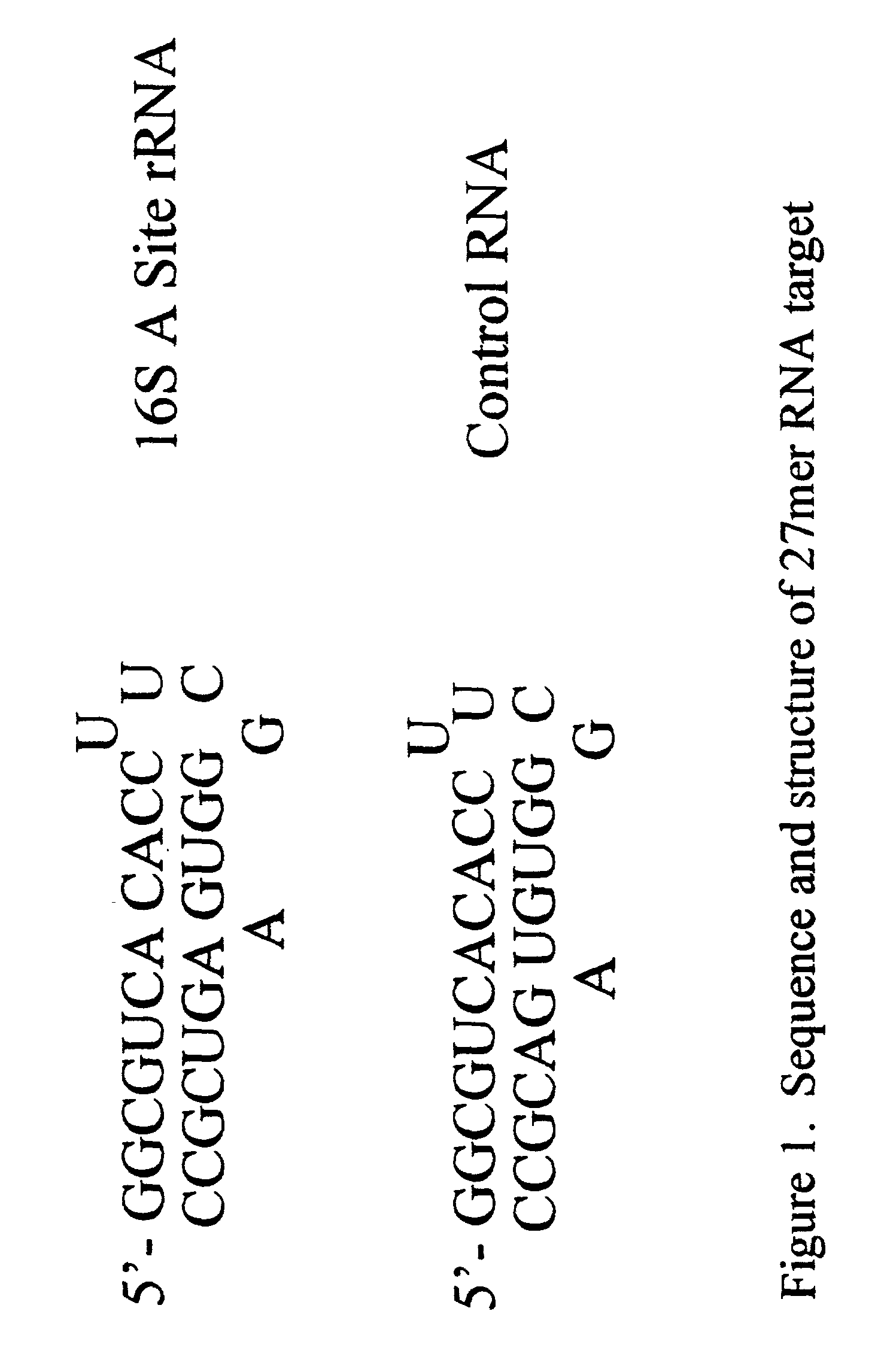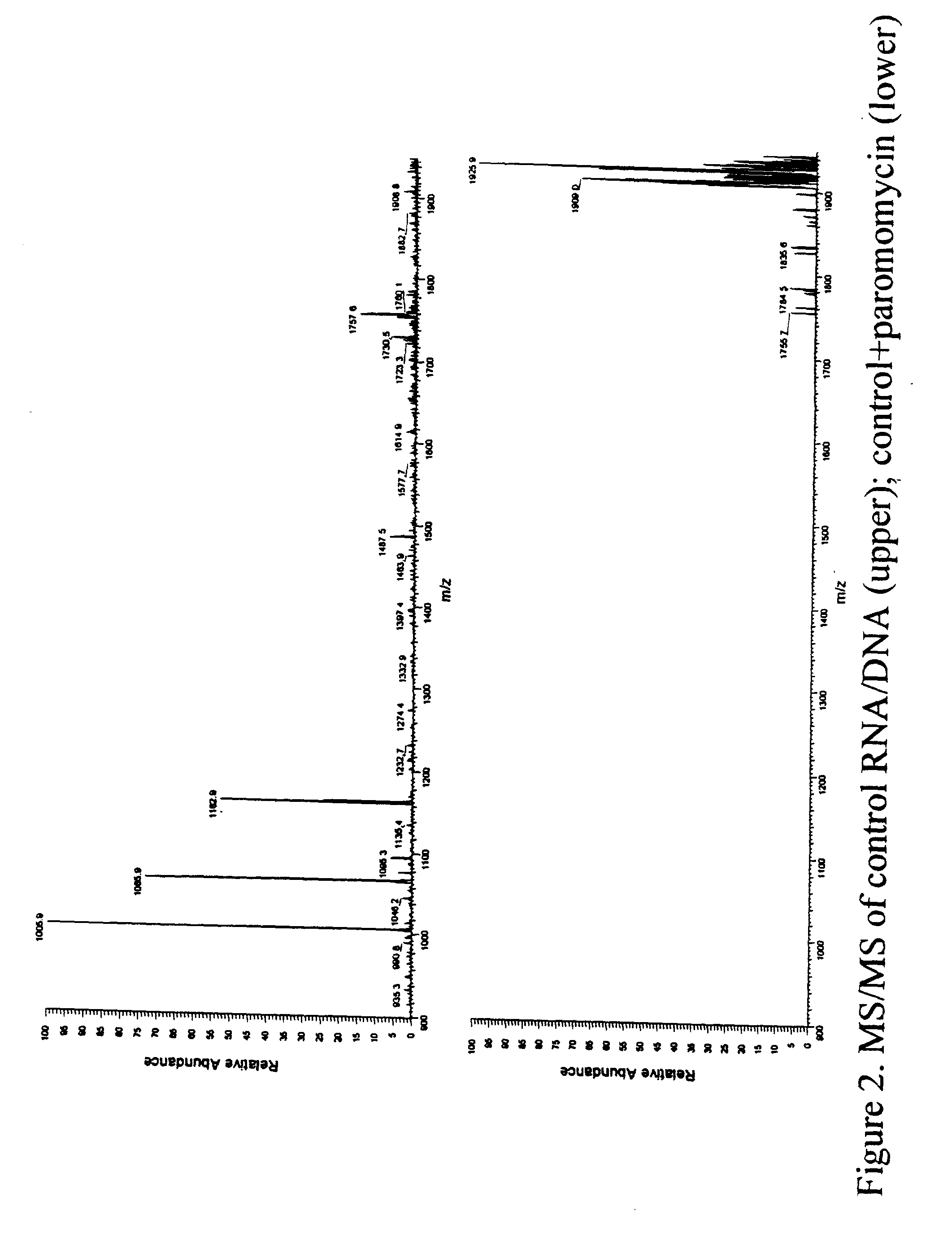Mass spectrometric methods for biomolecular screening
a mass spectrometry and biomolecular technology, applied in the direction of biological material analysis, peptides, nucleotide libraries, etc., can solve the problems of large effects on the biological activity of compounds, drug discovery and optimization involves the expensive and time-consuming, and therefore slow, process of synthesis and evaluation of single compounds bearing incremental structural changes
- Summary
- Abstract
- Description
- Claims
- Application Information
AI Technical Summary
Benefits of technology
Problems solved by technology
Method used
Image
Examples
example 1
Determining the Structure of a 27-mer RNA corresponding to the 16S rRNA A site
[0149] In order to study the structure of the 27-mer RNA corresponding to the 16S rRNA A site, of sequence 5'-GGC-GUC-ACA-CCU-UCG-GGU-GAA-GUC-GCC-3-' (SEQ ID NO:1) a chimeric RNA / DNA molecule that incorporates three deoxyadenosine (dA) residues at positions 7, 20 and 21 was prepared using standard nucleic acid synthesis protocols on an automated synthesizer. This chimeric nucleic acid of sequence 5'-GGC-GUC-dACA-CCU-UCG-GGU-GdAdA--GUC-GCC-3' (SEQ ID NO:2) was injected as a solution in water into an electrospray mass spectrometer. Electrospray ionization of the chimeric afforded a set of multiply charged ions from which the ion corresponding to the (M-5H).sup.5- form of the nucleic acid was further studied by subjecting it to collisionally induced dissociation (CID). The ion was found to be cleaved by the CID to afford three fragments of m / z 1006.1, 1162.8 and 1066.2. These fragments correspond to the w.sub...
example 2
Determining the Binding Site for Paromomycin on a 27-mer RNA corresponding to the 16S rRNA A site
[0152] In order to study the binding of paromomycin to the RNA of example 1, the chimeric RNA / DNA molecule of example 1 was synthesized using standard automated nucleic acid synthesis protocols on an automated synthesizer. A sample of this nucleic acid was then subjected to ESI followed by CID in a mass spectrometer to afford the fragmentation pattern indicating a lack of structure at the sites of dA incorporation, as described in Example 1. This indicated the accessibility of these dA sites in the structure of the chimeric nucleic acid.
[0153] Next, another sample of the chimeric nucleic acid was treated with a solution of paromomycin and the resulting mixture analyzed by ESI followed by CID using a mass spectrometer. The electrospray ionization was found to produce a set of multiply charged ions that was different from that observed for the nucleic acid alone. This was also indicative o...
example 3
Determining the Identity of Members of a Combinatorial Library that Bind to a Biomolecular Target
[0155] 1 mL (0.6 O.D.) of a solution of a 27-mer RNA containing 3 dA residues (from Example 1) was diluted into 500 .mu.L of 1:1 isopropanol:water and adjusted to provide a solution that was 150 mM in ammonium acetate, pH 7.4 and wherein the RNA concentration was 10 mM. To this solution was added an aliquot of a solution of paromomycin acetate to a concentration of 150 nM. This mixture was then subjected to ESI-MS and the ionization of the nucleic acid and its complex monitored in the mass spectrum. A peak corresponding to the (M-5H).sup.5- ion of the paromomycin-27mer complex is observed at an m / z value of 1907.6. As expected, excess 27-mer is also observed in the mass spectrum as its (M-5H).sup.5- peak at about 1784. The mass spectrum confirms the formation of only a 1:1 complex at 1907.6 (as would be expected from the addition of the masses of the 27-mer and paromomycin) and the absen...
PUM
| Property | Measurement | Unit |
|---|---|---|
| molecular weight | aaaaa | aaaaa |
| molecular weight | aaaaa | aaaaa |
| dissociation constants | aaaaa | aaaaa |
Abstract
Description
Claims
Application Information
 Login to View More
Login to View More - R&D
- Intellectual Property
- Life Sciences
- Materials
- Tech Scout
- Unparalleled Data Quality
- Higher Quality Content
- 60% Fewer Hallucinations
Browse by: Latest US Patents, China's latest patents, Technical Efficacy Thesaurus, Application Domain, Technology Topic, Popular Technical Reports.
© 2025 PatSnap. All rights reserved.Legal|Privacy policy|Modern Slavery Act Transparency Statement|Sitemap|About US| Contact US: help@patsnap.com



